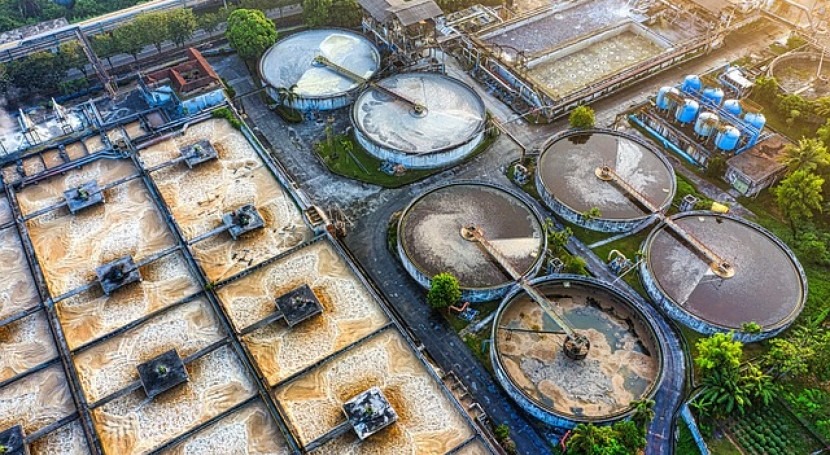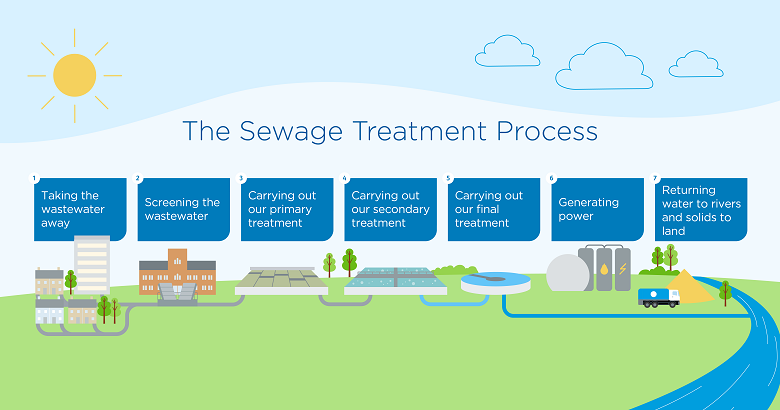Secret Obstacles in Urban Waste Water Treatment Strategies
Secret Obstacles in Urban Waste Water Treatment Strategies
Blog Article
Optimizing Drainage Therapy Processes: Methods for Improved Water Quality and Resource Recuperation
In the realm of wastewater treatment, the pursuit for improving efficiency and sustainability with procedure optimization is an ongoing quest that holds tremendous significance. By focusing in on approaches tailored to boost water quality while all at once taking advantage of valuable resources, treatment plants can resolve pressing ecological concerns while unlocking economic benefits. From innovative modern technologies to innovative resource recovery methods, the landscape of wastewater treatment is advancing swiftly. As we look into the complexities of enhancing these processes, a world of possibilities emerges that guarantees not just cleaner water yet additionally an extra lasting future.
Significance of Process Optimization
Optimizing drainage therapy procedures via careful process optimization is vital for making the most of efficiency and making certain ecological sustainability. By fine-tuning each action of the treatment process, from first intake to last discharge, water treatment centers can attain greater levels of contaminant elimination, minimize energy consumption, and decrease the generation of waste by-products. Process optimization entails examining essential performance indications, such as hydraulic retention times, sludge retention times, and nutrient levels, to recognize areas for improvement and apply targeted remedies.
Effective process optimization not just enhances the total efficiency of drainage treatment plants yet likewise adds to set you back savings and governing compliance. By optimizing procedures, operators can accomplish higher therapy abilities without the need for substantial facilities financial investments. Additionally, boosted therapy efficiency results in cleaner effluent discharge, reducing the ecological influence on obtaining water bodies and ecosystems.

Advanced Treatment Technologies
In the world of waste water therapy, the implementation of sophisticated therapy technologies plays an essential role in improving the total performance and effectiveness of the treatment procedures. These advanced innovations supply innovative options to resolve complicated impurities present in wastewater streams, making sure the elimination of toxins to meet strict water top quality criteria. Advanced treatment processes such as membrane layer bioreactors, ozonation, progressed oxidation procedures, and turn around osmosis enable the complete elimination of impurities, including arising pollutants like pharmaceuticals and personal care products.
Furthermore, these innovations promote source recuperation by removing useful materials such as phosphorus, nitrogen, and energy from the wastewater. As an example, progressed nutrient elimination modern technologies can recoup phosphorus and nitrogen for reuse in farming plant foods, while power recuperation systems like anaerobic digestion can harness biogas for power generation. By integrating sophisticated treatment innovations into wastewater therapy plants, drivers can boost water high quality, decrease environmental impact, and relocate in the direction of a more lasting and resource-efficient technique to wastewater administration.
Resource Recuperation Techniques
Source healing strategies in wastewater treatment procedures play an essential function in making the most of the application of important sources contained within wastewater streams. One typical source recovery method is the removal of nutrients like phosphorus and nitrogen from wastewater for reuse as plant foods or in industrial processes.
Water healing strategies, such as membrane innovations and progressed filtration systems, allow the therapy and reuse of water for non-potable applications like irrigation or commercial procedures. By implementing resource healing strategies in wastewater therapy plants, not only can important resources be saved and recycled, but the general sustainability and effectiveness of the therapy procedure can be significantly improved. As the emphasis on source deficiency and environmental sustainability proceeds to expand, the value of integrating resource recuperation methods into wastewater treatment processes comes to be significantly noticeable.
Lasting Practices in Wastewater Treatment
Lasting techniques in wastewater therapy incorporate a range of strategies aimed at decreasing the ecological effect of treatment procedures while maximizing source healing. One key aspect of lasting here wastewater therapy more info here is the implementation of energy-efficient technologies to minimize the carbon footprint of therapy plants.
Furthermore, the adoption of innovative treatment innovations that promote water reuse and recycling plays an essential duty in sustainable wastewater monitoring. By treating wastewater to a high criterion, it can be repurposed for various non-potable applications, such as watering, commercial procedures, and also drinkable water manufacturing sometimes. This not only saves beneficial freshwater resources yet also minimizes the volume of effluent released right into the atmosphere.

Instance Researches on Effective Optimization
As wastewater therapy centers significantly concentrate on lasting practices, real-world instance researches showcasing effective optimization strategies act as important designs for industry development. One such study focuses on the implementation of innovative nutrient elimination modern technologies in a metropolitan wastewater therapy plant. By including organic nutrient removal processes and optimizing functional criteria, the center achieved substantial decreases in nitrogen and phosphorus levels discharged right into obtaining waters, eventually enhancing overall water top quality.
Another notable study includes the combination of anaerobic digestion systems in a commercial wastewater treatment plant to enhance power healing and source effectiveness (Waste Water Treatment). Through the food digestion of organic waste materials, the center not only produced biogas for energy manufacturing but additionally minimized the volume of sludge calling for disposal. This double advantage not just improved the plant's sustainability efficiency but additionally led to cost financial savings
These successful optimization strategies show the potential for wastewater therapy facilities to accomplish both financial and environmental advantages through cutting-edge methods and reliable processes. By picking up from these study, sector professionals can better optimize their very own procedures to improve visit water top quality and resource recuperation.
Verdict
To conclude, maximizing waste water therapy procedures through sophisticated technologies, resource recuperation strategies, and lasting techniques is vital for improving water quality and optimizing source healing. Waste Water Treatment. Case research studies have shown effective implementation of optimization methods in various wastewater treatment centers. By continuing to prioritize procedure optimization, we can ensure reliable and reliable treatment of wastewater, eventually bring about a more sustainable and ecologically friendly strategy to taking care of water sources
By fine-tuning each step of the therapy procedure, from first consumption to last discharge, water therapy centers can attain greater degrees of impurity elimination, reduce energy usage, and lessen the generation of waste spin-offs.In the world of waste water therapy, the implementation of advanced treatment technologies plays a pivotal role in enhancing the overall efficiency and performance of the therapy procedures. By integrating sophisticated treatment technologies right into wastewater therapy plants, operators can improve water top quality, lower ecological effect, and move towards an extra lasting and resource-efficient method to wastewater management.
By implementing resource healing methods in wastewater therapy plants, not only can important resources be conserved and reused, yet the overall sustainability and efficiency of the therapy process can be substantially boosted. Sustainable methods in wastewater therapy encompass a range of approaches aimed at reducing the environmental impact of therapy processes while maximizing source recovery.
Report this page